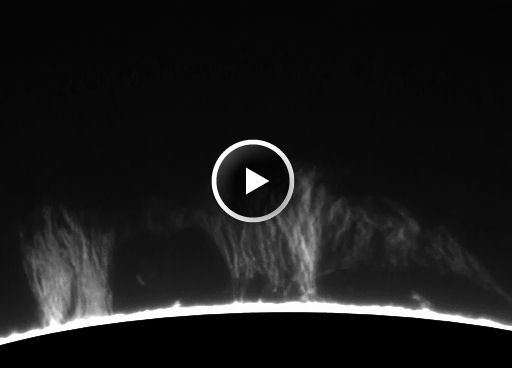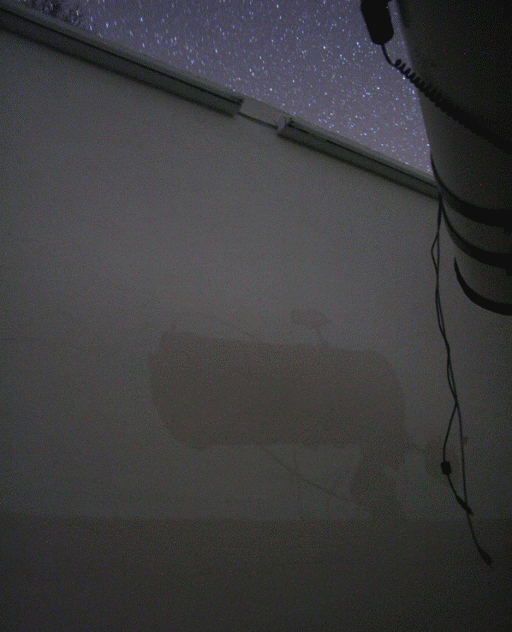Turn your cell phone into a field-tested satellite tracker. Works for Android and iPhone. | | |
FULL WOLF MOON: Can you hear the howls? According to folklore, tonight's full Moon is the "Wolf Moon," named long ago by Native Americans after the singing packs of wolves they heard during the winter month of January. After nightfall, go outside for a beautiful view--and don't forget to listen carefully, too.
Wolf moonshots: from Jin Lu of Tempe, Arizona; from P-M Hedén of Vallentuna, Sweden; from Jesper Grønne of Silkeborg Denmark; from Austin Taylor of Aberdeen, Scotland
PLASMA RAIN: A sheet of plasma more than 350,000 km wide is rising and falling along the sun's southwestern limb today. It's so big, it makes an easy target for backyard observatories. Amateur astronomer Michael Buxton sends this time lapse movie from Ocean Beach, California:

"I made the movie at 1 minute intervals from 1753-1934 UT on Jan. 18th," he explains. "It was a real jaw dropper. Even in my small telescope (a 4-inch Takahashi refractor with a H-alpha solar filter) you could clearly see blobs of plasma falling to the stellar surface."
Latest images from NASA's Dynamics Observatory show that the prominence is still present and active. Readers with solar telescopes are encouraged to monitor the plasma rain.
more images: from Ron Cottrell of Oro Valley, Arizona; from Steve Rismiller of Titusville, Florida.
SHADOWS OF VENUS: Wake up before dawn, look east, and you'll see: Venus is bright. How bright is it? The silvery second planet from the sun is so bright, it actually casts shadows. In the south of France on the morning of Jan. 12th, Vincent Jacques photographed the Venus-shadow of his own telescope:

"I was observing from a place with absolutely no artificial lights," notes Jacques. "Also, the Moon was absent from the morning sky. It was uttterly dark except for Venus, which was blazing bright at magnitude -4.4. I recorded the shadow using a Canon EOS 350D digital camera in a series of 135s exposures at 1600 ISO."
Venus-skeptics should watch the 5-frame animation. The shadow sets as Venus rises, a see-saw motion that eliminates any doubt. The Morning Star is bright, indeed.
January 2011 Aurora Photo Gallery
[previous Januaries: 2010, 2009, 2008, 2007, 2005, 2004]
Solar Eclipse Photo Gallery
[NASA: Hinode Observes Annular Solar Eclipse]

